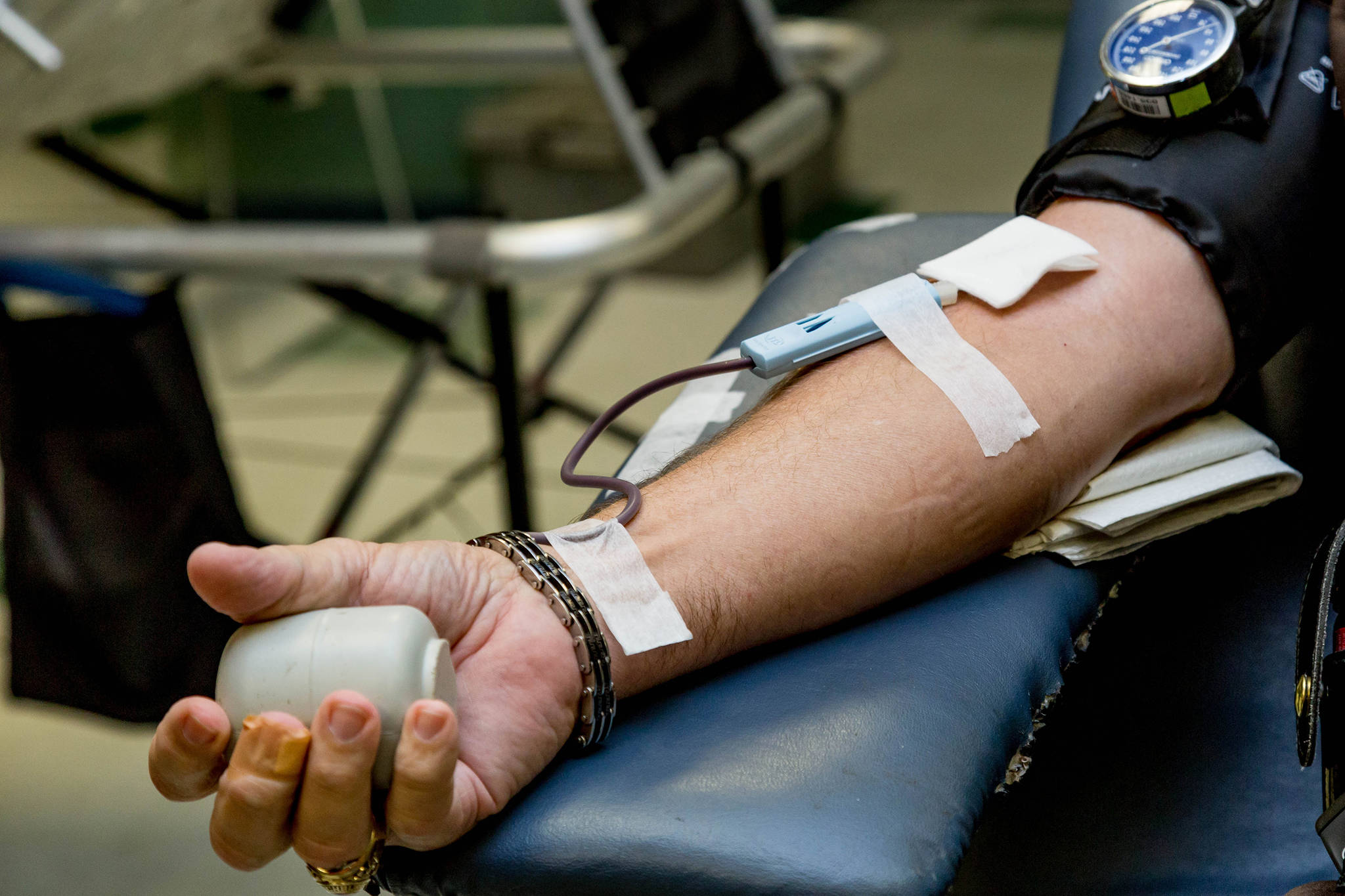Residents in a small Southeast Alaska city know so-called “forever chemicals” are in local water supplies. Now they’ll find out exactly how much is in their blood stream.
Early next week, blood samples will be collected from dozens of Gustavus residents, which will then be sent to Indiana University Bloomington, where they will be analyzed for PFAS contamination. Gustavus PFAS Action Coalition Chair Kelly McLaughlin told the Empire she’s hoping for 40-65 participants.
“I just feel really strongly everyone should know what their body burden is,” said McLaughlin, who had her blood tested early last year on her own. “It helped me wrap my head around it a little more.”
PFAS, per- and polyfluoroalkyl substances, are a group of man-made chemicals, that are persistent in the environment, according to the Environmental Protection Agency. The chemicals have caused tumors in animals, and they have been linked to low birth weights, negative effects on the immune system, increased risk of cancer, increased cholesterol levels, lower fertility levels and thyroid disruption, according to the EPA and the Agency for Toxic Substances and Disease Registry.
PFAS are in many products and have been since the 1940s, according to the EPA. Most people around the state and country have been exposed to them at some point, and they’ve been found in groundwater around Alaska, including in Juneau.
[Juneau tests for ‘forever chemicals’]
While Juneau’s sites were not near known sources of drinking water, according to the City and Borough of Juneau, PFAS are present in many Gustavus wells. Drinking water is being distributed by the state to people with water that tested above the action level threshold.
PFAS contamination is not unique to Gustavus, but Pam Miller, Executive Director for Alaska Community Action on Toxics, said it is one of the only communities in the state participating in a biomonitoring study. Miller said she is also heard of an ATSDR study near Moose Creek, which is part of the Fairbanks North Star Borough.
The Gustavus project is being supported by the Indiana University Bloomington, which will test the blood samples for free, and the Alaska Community Action on Toxics, an Anchorage-based organization that helped coordinate the study, provided supplies and will assist with collection efforts. Blood tests for PFAS can cost as much as $800, depending on the lab conducting the test. Shipping samples from Alaska can add to that total, too.
Miller said it would be difficult to put a monetary value on the amount of support effort is receiving since ACAT staff hours will be part of the total, and blood has yet to be drawn. She also said the effort would not be possible without the efforts of each of Gustavus PFAS Action Coalition, ACAT and Indiana University Bloomington.
“All the entities are providing supplies or some kind of support,” Miller said.
In addition to blood, Miller said the study will examine possible correlation between chemical presence in drinking water and blood syrum levels.
McLaughlin said the two chemicals that were highest in her blood test results last year were the same chemicals that were most present in her well.
The EPA’s health advisory for PFAS in water is 70 parts per trillion, an amount which The Associated Press has described as three drops in an Olympic-sized pool. McLaughlin said her well tested at 130 parts per trillion.
She said the PFAS level in her blood was somewhere around 10,000 parts per trillion.
“If I hadn’t drank the water, I think it would be lower,” McLaughlin said.
She said it’s difficult to tell if that’s had any impact on her health and did not share any specific complaints.
“It’s so tough to say,” McLaughlin said.
Northern exposure
Exactly what PFAS presence in blood means is unclear, according to the Agency for Toxic Substances and Disease Registry, and blood test results won’t predict or rule-out the development of future health problems.
However, blood tests are useful when they are part of a scientific investigation or a health study, according to the ATSDR.
That’s what’s bringing Alaskan blood to Indiana.
Amina Salamova, assistant scientist for O’Neill School of Public and Environmental Affairs at Indiana University Bloomington, told the Empire she is researching exposure to environmental contaminants.
“I would like to look at exposures that people are experiencing in a small community in Alaska,” Salamova said.
Miller said exposure studies are important because they can help provide information that’s useful to both individuals and communities.
“That can then inform any kind of interventions that might reduce exposure,” Miller said.
McLaughlin said she anticipates a wide range of ages and exposure levels will be represented by Gustavus residents. The U.S. Census Bureau lists Gustavus’ estimated population at 446. So, 45 participants would represent about 10 % of the community.
[PFAS chemical contamination will cost the state millions]
“We’ll have a really good range,” McLaughlin said.
Once the samples arrive in Indiana, Salamova said the lab would be able to analyze them for 40 different types of PFAS.
“We are going to start the analysis as soon as we get the samples,” Salamova said.
Results are expected by mid-January, and they will be shared with community members.
Salamova said depending on how the study goes, she’d be interested in expanding its scope to other Alaska cities and villages. Miller said she’d like to see that happen to, and this is being looked at as a pilot study.
“Hopefully, we can expand this to other communities in Alaska,” Salamova said. “Contamination doesn’t have borders.”
• Contact reporter Ben Hohenstatt at (907)523-2243 or bhohenstatt@juneauempire.com. Follow him on Twitter at @BenHohenstatt.

